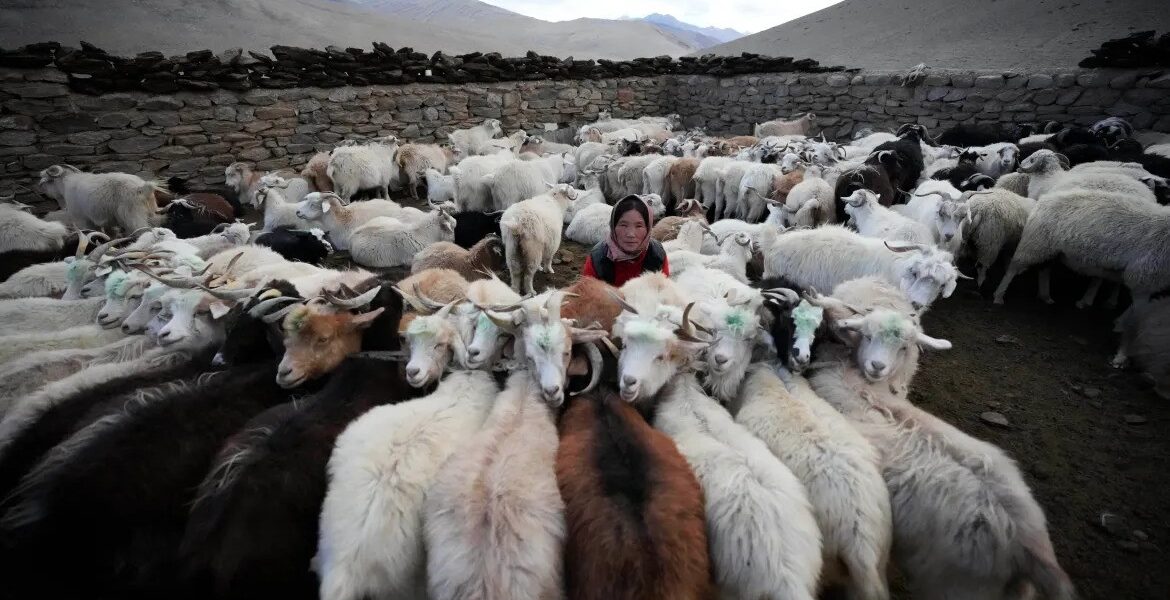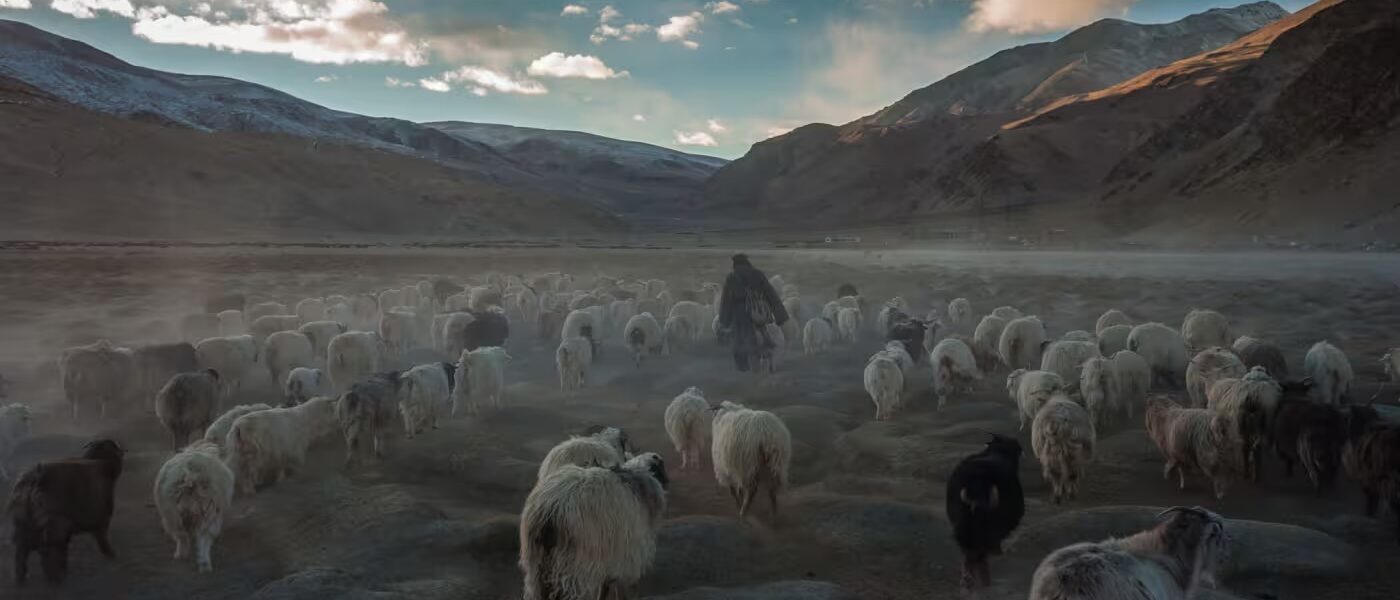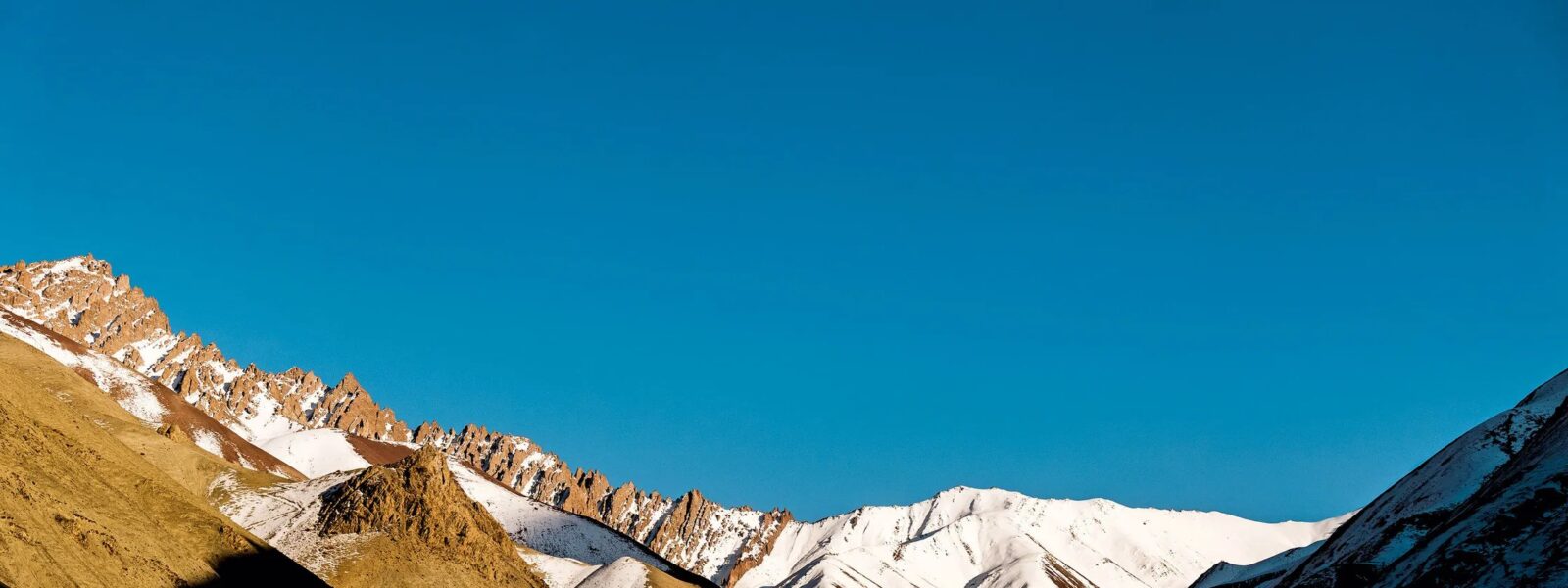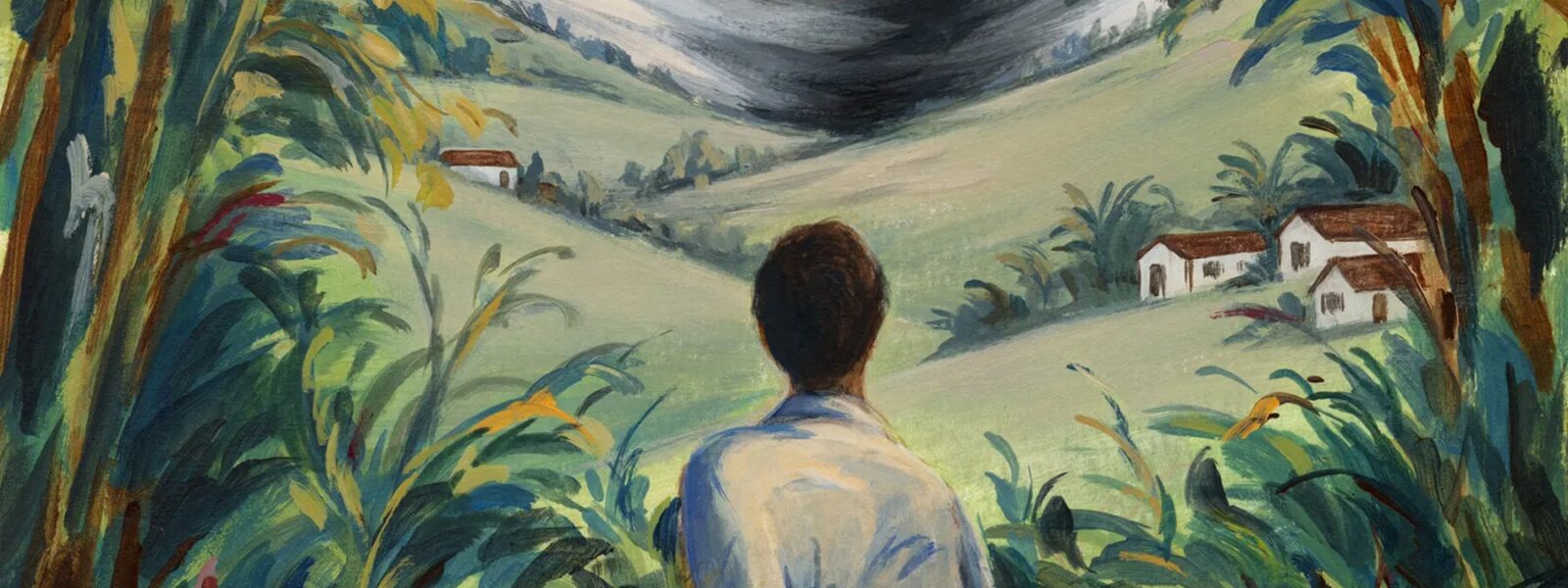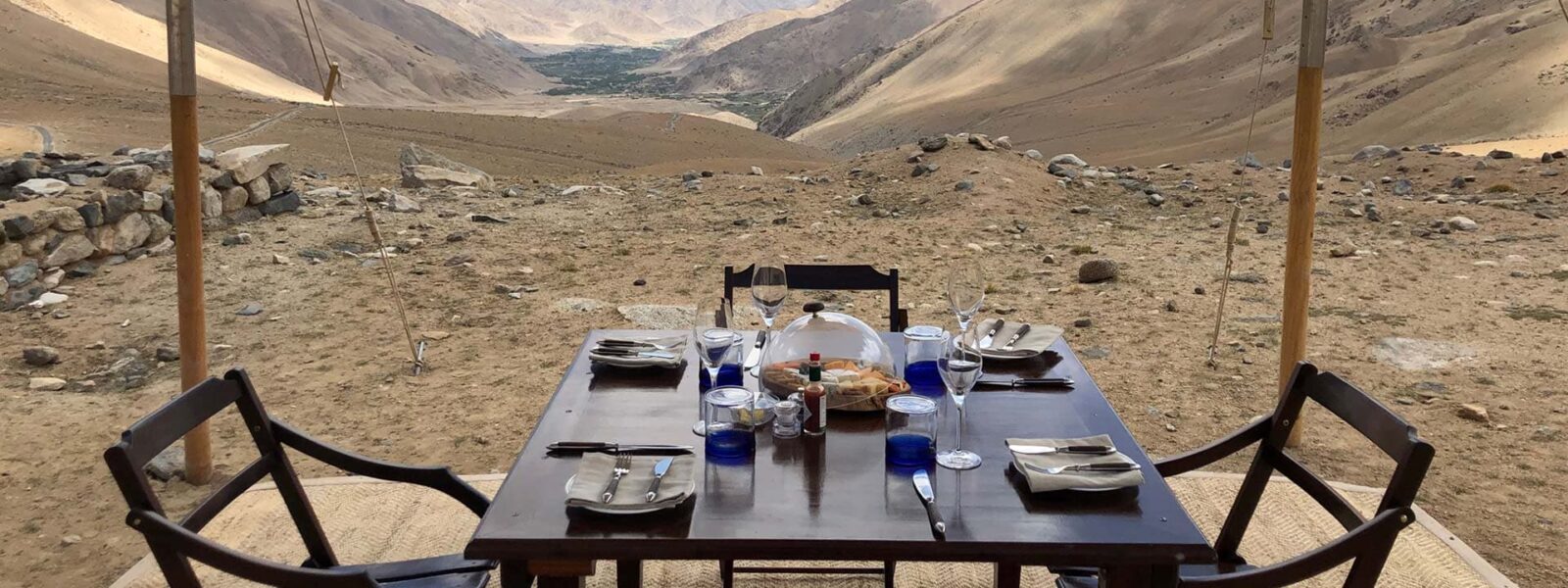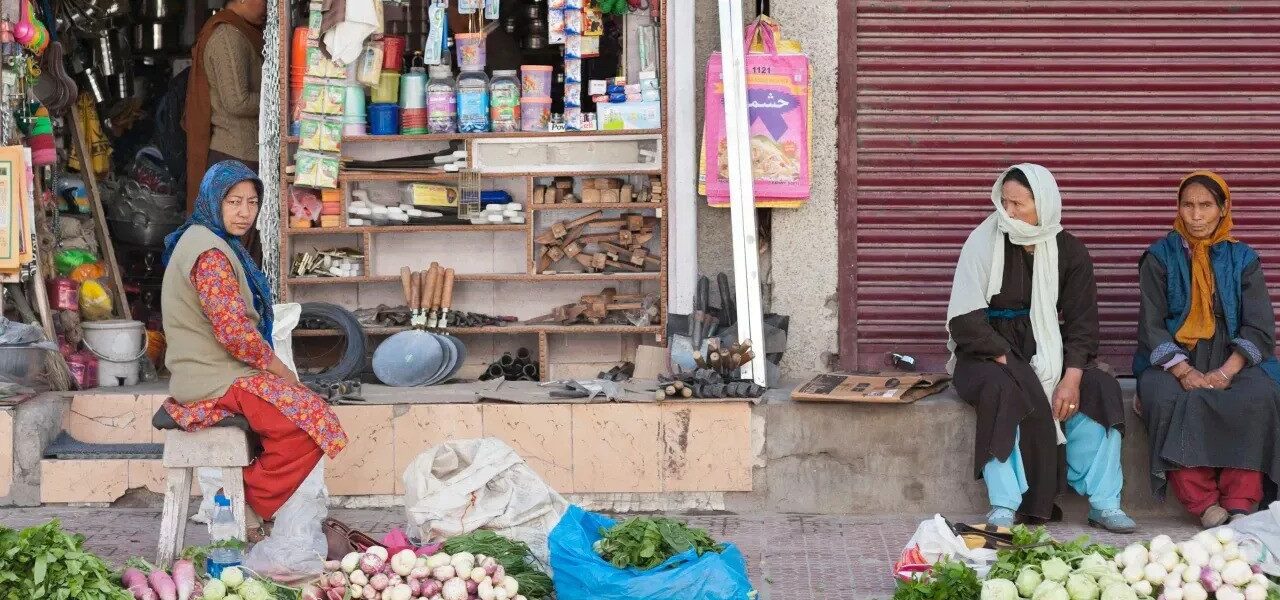Where Blossoms Meet the Breeze
There are places in the world where time slows down. Where the landscape speaks in whispers rather than shouts, and where nature blooms not in abundance, but in poetic restraint. Nubra Valley, tucked deep within the folds of Ladakh’s high-altitude terrain, is one of those places. And when spring unfurls its subtle miracles, the barren desert awakens—not with thunder, but with blossoms.
Every April, as the winter grip softens, apricot trees in Nubra Valley begin to stir. They do not bloom in flamboyant waves, but in a gentle rhythm, one blossom after another, like lines in a poem. These delicate pink and white petals flutter in the cold breeze that sweeps through the valley, tracing the footsteps of ancient caravans and whispered histories.
I arrived in the valley as the first petals fell, carried by the wind like scattered verses. The air had a quiet sweetness, tinged with the scent of thawing earth and distant snow. Against the backdrop of craggy, sun-kissed mountains, the apricot trees stood like dancers caught mid-movement—graceful, ephemeral, defiant.
What struck me most wasn’t the beauty alone—it was the contrast. The high desert here is unforgiving, its silence profound, its sunlight often blinding. But in the midst of this austere terrain, nature plants its defiance in color. A thousand apricot trees bloom where you’d expect only dust and stone. And suddenly, you understand: Nubra is not just a destination; it is a paradox. It is where the desert learns to dream.
From Hunder’s sand dunes to the hidden gardens of Turtuk village, the valley pulses with life reborn. These blossoms are not merely decorative—they are cultural anchors, signaling the arrival of community gatherings, celebrations, and stories passed from generation to generation. Locals often say the apricot flower is “the smile of the mountain.” And once you see them, blooming with tender defiance under a Himalayan sky, you’ll believe it too.
As a traveler from Europe, used to the soft greens and orderly blooms of temperate spring, this Himalayan bloom feels raw and poetic. It invites you not just to observe, but to listen—to the breeze rustling through stone-walled orchards, to the sound of prayer wheels turning in monasteries nestled in bloom-filled valleys, to your own heartbeat slowing to match the rhythm of the land.
This is where the journey begins—not on a map, but in a feeling. In the hush before the wind. In the first fallen petal. In that perfect intersection of desert and blossom where Nubra Valley gently takes your hand and says, “stay a while.”

When the Apricots Bloom: A Valley Awakens
Spring in Nubra doesn’t arrive with fanfare. There are no dramatic thaws or bursts of greenery. Instead, it begins with a whisper—soft pink petals unfolding in the chill morning light, cautious yet determined. As if the valley itself is remembering how to breathe again. This is apricot blossom season in Nubra Valley, and for a few fleeting weeks each year, the desert becomes a garden of secrets.
The timing is precious. Between late March and mid-April, the trees come alive, and the landscape transforms into a watercolor of blush and white. In a region where life is dictated by altitude, wind, and silence, the bloom is not just a natural event—it is a celebration of survival, a soft rebellion against the cold. These apricots, brought here generations ago along ancient trade routes, now define the very spirit of Nubra’s spring.
You’ll find the heart of the bloom in villages like Turtuk, Bogdang, and Skuru, where the trees grow in terraced orchards bordered by stone walls. These are not manicured gardens but living tapestries, tended by families who understand the rhythm of the land like a second language. Children chase chickens under flowering branches, while elders sit outside homes sipping salted tea, their eyes tracing the petals as they drift like snowflakes.
There’s something humbling about walking beneath these trees. The silence is thicker here, padded by blossoms. Every breeze carries with it a flurry of petals—momentary beauty that disappears as quickly as it came. It’s the kind of beauty that teaches you presence. Not the postcard kind, but the kind you carry home quietly, folded between memory and longing.
For photographers, this is a dreamscape. The interplay of light and shadow on the blossoms, the contrast between the vibrant trees and the stark desert mountains—every frame feels like poetry. But even without a camera, you’ll want to stop often, just to watch, to listen, to be. Because this isn’t just nature—it’s a moment of collective awakening, when people, land, and season all exhale at once.
Travelers arriving from cities or from the green corners of Europe often find this landscape perplexing at first. “How can something so beautiful exist here?” they ask. And the valley answers in blossoms. The trees speak for the people. They say: even here, especially here, life insists on returning.
So, if you ever ask when is the best time to visit Nubra Valley, let it be now—when the apricots bloom and the valley wakes slowly, beautifully, and with a quiet kind of joy that lingers long after the flowers are gone.

Of Sand Dunes and Spring Flowers: The Paradox of Nubra
If you arrived in Nubra Valley blindfolded and removed it in Hunder, you might think you’d landed somewhere in the Middle East. Golden sand dunes roll softly beneath a sky as sharp as crystal. Camels with shaggy coats shuffle quietly across the terrain. The sun is dry, the air thin. And then, just as your mind begins to define this place as a desert—a whisper of pink catches your eye. Apricot blossoms, clinging to gnarled branches, bloom stubbornly against the barren wind.
It is this contrast that makes Nubra unforgettable. The collision of desert austerity and spring’s fleeting tenderness. Here, nature does not follow the rules you thought you knew. In one glance, you witness both the harshness of survival and the delicate beauty of surrender. This is not a postcard-perfect landscape. It is a place of poetry—a paradox that draws you deeper with every step.
Take a walk through the sand dunes of Hunder in April. Your boots sink into warm grains as you trace the horizon, and suddenly, a cluster of blooming apricot trees appears like a mirage at the edge of the village. The petals shimmer against the stark earth like scattered confetti after a festival long forgotten. In the distance, the Shyok River winds lazily, glinting under the Himalayan sun as if it too is drunk on spring.
Locals speak of the desert wind as if it has a personality—moody in the mornings, mischievous in the afternoons, philosophical by dusk. The wind brings change, they say. And it carries with it stories: of caravans that once passed through, of prayers offered to unseen gods, of harvests celebrated and mourned. The apricot trees bloom into this wind, not in defiance, but in rhythm. As if they know that beauty must be brief to be true.
European travelers often marvel at this landscape, their eyes wide with disbelief. “It’s like Morocco met the Alps,” one French visitor once said to me, “and they decided to plant flowers together.” I couldn’t have put it better. Nubra has a way of challenging your expectations—of terrain, of time, of tenderness.
In this part of Ladakh, spring is not just a season—it’s a conversation. A quiet dialogue between dust and blossom, between stone and sky. And if you’re lucky enough to be here while that dialogue unfolds, you’ll find yourself listening not with your ears, but with your entire spirit.
As the sun begins to set and the dunes glow amber, pause. Let the wind tousle your hair. Let the sand warm your feet. And let the blossoms, clinging to their branches in gentle defiance, remind you that even the harshest landscapes have room for tenderness.

Villages in Bloom: Soulful Stops in Turtuk and Bogdang
Follow the blossom trail further north, and you’ll find yourself drifting into the folds of time. Nestled near the Line of Control with Pakistan, the villages of Turtuk and Bogdang bloom not just with apricot flowers, but with culture, memory, and warmth. These remote communities, once part of Baltistan, hold within them stories etched into stone, soil, and soul. When spring arrives, they do not simply witness the bloom—they become it.
In Turtuk, narrow paths wind through orchards and over gurgling mountain streams. Children run barefoot under a canopy of blossoms, their laughter echoing off stone walls that have seen centuries. The trees here are not simply planted—they are inherited. Passed down from grandfather to grandson, their fruit and their flowers cherished as both nourishment and ritual. Walk into a family orchard and you’re likely to be handed a handful of dried apricots, sun-kissed and sweet, along with stories about how that very tree was once planted to honor a birth, a marriage, a harvest.
The people of Turtuk wear their heritage proudly. Men in traditional woolen coats greet visitors with soft dignity, and women in embroidered scarves tend to apricot blossoms as carefully as one tends to memories. It is not uncommon to hear soft Sufi music floating through the air at dusk, blending with the scent of wild herbs and fresh blossoms. This is not a performance for tourists—it is the valley’s daily rhythm, its quiet music.
Just beyond lies Bogdang, a smaller village with fewer visitors, but no less charm. Here, the landscape is gentler, the silence deeper. You may find yourself invited for salted butter tea or apricot stew by a family who speaks little English but whose hospitality speaks volumes. The apricot trees here are lower to the ground, their blossoms close enough to touch, as if they, too, long for connection.
For European travelers, accustomed to springtime in structured parks and botanical gardens, this feels deeply organic. It is not curated beauty—it is lived beauty. There are no fences around these trees, no signs pointing to photo spots. What you’ll find instead are moments: a child braiding a garland from fallen petals, an elder kneeling to clear debris from a root, a family laying out blankets beneath a tree to break bread under blooms.
These villages are more than stops on a map. They are portals to another pace of life, one where time stretches and breathes. Here, amidst the blossoms, your heart learns to quiet. Your steps slow. Your gaze softens. Because here, in the tender light of spring, you are not just visiting—you are remembering something you didn’t know you had forgotten.
Stay long enough, and the villagers may gift you an apricot blossom, tucked gently behind your ear or placed in your palm. A small gesture, yet in it lies the essence of Nubra: a welcome that blooms where the world narrows, and an invitation to feel, fully and freely, the poetry of place.

Capturing the Magic: Photography and Reflection
There are places you photograph to remember, and then there are places you remember instead of photographing—because a camera could never truly hold them. Nubra Valley during apricot blossom season somehow belongs to both. It is visually stunning, yes, but also emotionally immersive. A place where each frame tells more than a story—it tells a feeling.
For photographers, springtime in Nubra is an invitation to chase light and shadow. In the early morning, the apricot petals glow with a quiet luminescence, lit from behind by the rising sun. Against the backdrop of weathered mud-brick homes, prayer flags, and snow-dusted peaks, the blossoms create a dreamlike contrast that seems almost too perfect to be real. You’ll want to wake up early—just before the wind rises—to catch that suspended stillness when every petal seems to hang in midair.
Some of the best photography spots can be found in the lesser-known lanes of Bogdang and the edge-of-the-world paths of Turtuk. Wander slowly and with curiosity. You might find a grandmother gathering blossoms into her scarf, or a pair of children building a swing from a tree branch heavy with bloom. These moments are not staged. They simply are. And when captured with care, they carry the texture of truth.
But photography here is not just about the image. It’s about connection. You might spend twenty minutes composing the perfect frame, only to have a breeze scatter the petals seconds before you click. And you’ll laugh—because Nubra doesn’t pose. It moves. It breathes. It invites you to participate rather than observe.
For those less inclined toward the camera, a journal can be just as powerful. Sketch the outline of a tree against a sunlit sky, jot down the scent of warm blossoms mixed with cold earth, record the way the wind sounds at dusk. These impressions, once captured, have a way of staying with you long after you’ve returned home. Long after the petals have fallen.
European travelers often tell me they came to Nubra with a lens, but left with something else entirely—a softened gaze, a renewed sense of wonder, a tenderness they hadn’t expected. That is the magic of this place. It teaches you that not all beauty is meant to be held. Some of it is meant to be felt, fleetingly, fully, and then let go.
So take your photos. Frame your shots. But also, when the moment calls for it, put the camera down. Let your eyes drink in the blossoms. Let the silence fill you. Let yourself be captured, instead.

The Stillness Between the Winds: A Poetic Pause
There is a moment in Nubra Valley, just before dusk, when the wind calms and the air holds its breath. The petals have stopped falling. The camels have returned to their corrals. The sounds of prayer wheels have faded into the stone. And in that stillness, something unexpected arises—not silence, exactly, but a kind of inner quiet. A pause in time. A space where reflection becomes inevitable.
In this Himalayan desert, where landscapes can feel so vast they stretch beyond imagination, it is the smallest things that begin to matter. The delicate shadow of a blossom on a stone wall. The creak of an old wooden door opening to a kitchen that smells of cardamom and wood smoke. The way a young apricot tree leans just slightly, as if bowing to the mountains. These quiet gestures speak louder than any guidebook or monument.
One evening in Turtuk, I sat beneath a blooming tree with an old man who had lived his entire life there. He didn’t say much. We simply watched the wind move through the branches. At one point, he turned to me and said in a hushed tone, “When the flowers fall, the mountains remember.” I didn’t ask what he meant. I didn’t need to. In that moment, I felt it—how this place stores memory, not in words, but in wind, in blossom, in breath.
Traveling through Nubra in spring isn’t just sightseeing. It’s surrender. The kind of surrender that invites you to slow your steps, soften your voice, and open yourself to the unseen rhythms of the land. It’s easy to rush from one viewpoint to another, checking places off a list. But here, more than anywhere, the valley teaches you to do the opposite. To linger. To breathe. To be present.
Many European travelers have told me the same thing after a few days in Nubra: “I didn’t know how much I needed to be still.” In a world where time is currency and silence is rare, this valley offers something profoundly healing—a landscape that doesn’t ask anything of you, except your presence.
Whether you find your pause under an apricot tree, beside a monastery wall, or along the banks of the Shyok River, the effect is the same. You emerge quieter. Lighter. Rooted. And somehow, more whole. The wind will return, as it always does. But if you’ve truly listened during its absence, you’ll hear something deeper when it speaks again.
And that is the essence of Nubra: not only the beauty it shows you, but the space it gives you to listen to yourself.

Practical Wisdom for the Wanderer
By the time you’ve watched apricot petals swirl like snowflakes and felt the desert wind tousle your thoughts, you might be ready to leave a part of yourself in Nubra Valley. But before you pack your bags—or your journal—there are a few quiet truths worth knowing. Because in a place as delicate as this, even the way you travel can become a form of poetry.
To begin your journey, you’ll most likely arrive in Leh, the high-altitude capital of Ladakh. From there, the road to Nubra winds across one of the highest motorable passes in the world: Khardung La. At over 5,300 meters, it’s not just a gateway, it’s a rite of passage. Take your time. Acclimatization isn’t a suggestion—it’s a necessity. Spend at least two days in Leh, drinking ginger tea, walking slowly, and listening to your breath.
When the time is right, hire a local driver—one who knows the mountains not just by route but by rhythm. The descent into Nubra is a tapestry of shifting colors and landscapes. April may still bring patches of snow, even as blossoms are in full bloom below. Keep your camera ready, but keep your wonder closer.
Accommodation here is simple and soulful. Homestays in Turtuk, guesthouses in Bogdang, and traditional mud-brick dwellings in villages like Skuru offer not just shelter but connection. Ask about the trees in their courtyard. Most families will proudly tell you which apricot tree has stood for generations. If you’re lucky, they’ll serve you chuli jam—apricot preserves sweetened with time and care.
Bring layers. Mornings are crisp, afternoons warm, and evenings chilly. A windbreaker, woolen shawl, and good walking shoes will serve you better than any flashy gear. Sunscreen is essential—the sun is bold at these heights—and so is humility. You are a guest here. A kind smile, a soft voice, and a willingness to learn go further than any travel app.
If you’re visiting during the bloom, support the local economy by buying apricot products made in the villages: oils, soaps, dried fruit, even handcrafted apricot-wood souvenirs. These purchases don’t just support sustainable tourism—they keep the stories of the land alive.
One more piece of advice for my fellow European travelers: don’t rush. Slow travel in Nubra is not just a preference—it’s a practice. Let go of fixed schedules. Allow for detours and delays. Let the landscape set your pace. Here, time doesn’t tick—it drifts.
And finally, remember that in Nubra, the journey is more inward than outward. Come prepared to wander, to witness, to be moved. The apricot blossoms will fall. The winds will change. But what you carry home from this valley—if you travel with grace—will linger far longer than the dust on your boots.

Closing Notes: A Valley That Writes Poetry on Your Soul
Not every journey leaves footprints. Some etch themselves into your breath, your way of seeing, the rhythm of your inner life. Nubra Valley is such a place. Long after the petals have fallen and the winds have changed, something in you remains altered. Softer, quieter. Perhaps even wiser.
There’s a reason why the apricot blossom in Ladakh has become more than a seasonal phenomenon—it has become a symbol. Of resilience. Of ephemeral beauty. Of how something so gentle can grow from something so harsh. And when you walk through Nubra during the bloom, you feel that metaphor in your bones. You realize that the desert is not a place of absence, but of profound presence.
I’ve met travelers from Berlin to Barcelona, from Paris to Prague, who came here on a whim and left with a piece of the valley stitched into their spirit. They speak not just of the landscapes, but of the silences. Not just of the photographs, but of the pauses between them. Because here, in this high-altitude Himalayan desert, beauty is not given—it is revealed. Slowly. Gently. Honestly.
Perhaps that is why Nubra feels less like a destination and more like a poem. One that isn’t read, but felt. Line by line. Breeze by breeze. Blossom by blossom. And like all great poetry, it lingers. You carry it with you through airports and traffic lights, through crowded cities and sleepless nights. It becomes the quiet in your thoughts. The soft place you go to when the world feels too much.
So if you’re planning to visit, come not just with your camera, but with your heart open. Come not just to see, but to feel. To listen. To slow down. And to be moved. Because Nubra will not shout for your attention. It will whisper. And if you listen carefully enough, it will write something on your soul that no passport stamp ever could.
And when you return to your world—where spring arrives on schedule and beauty is often curated—may a part of you still bloom quietly. Like the apricot trees in Nubra. Rooted in stone. Reaching for the sky. Unapologetically beautiful.
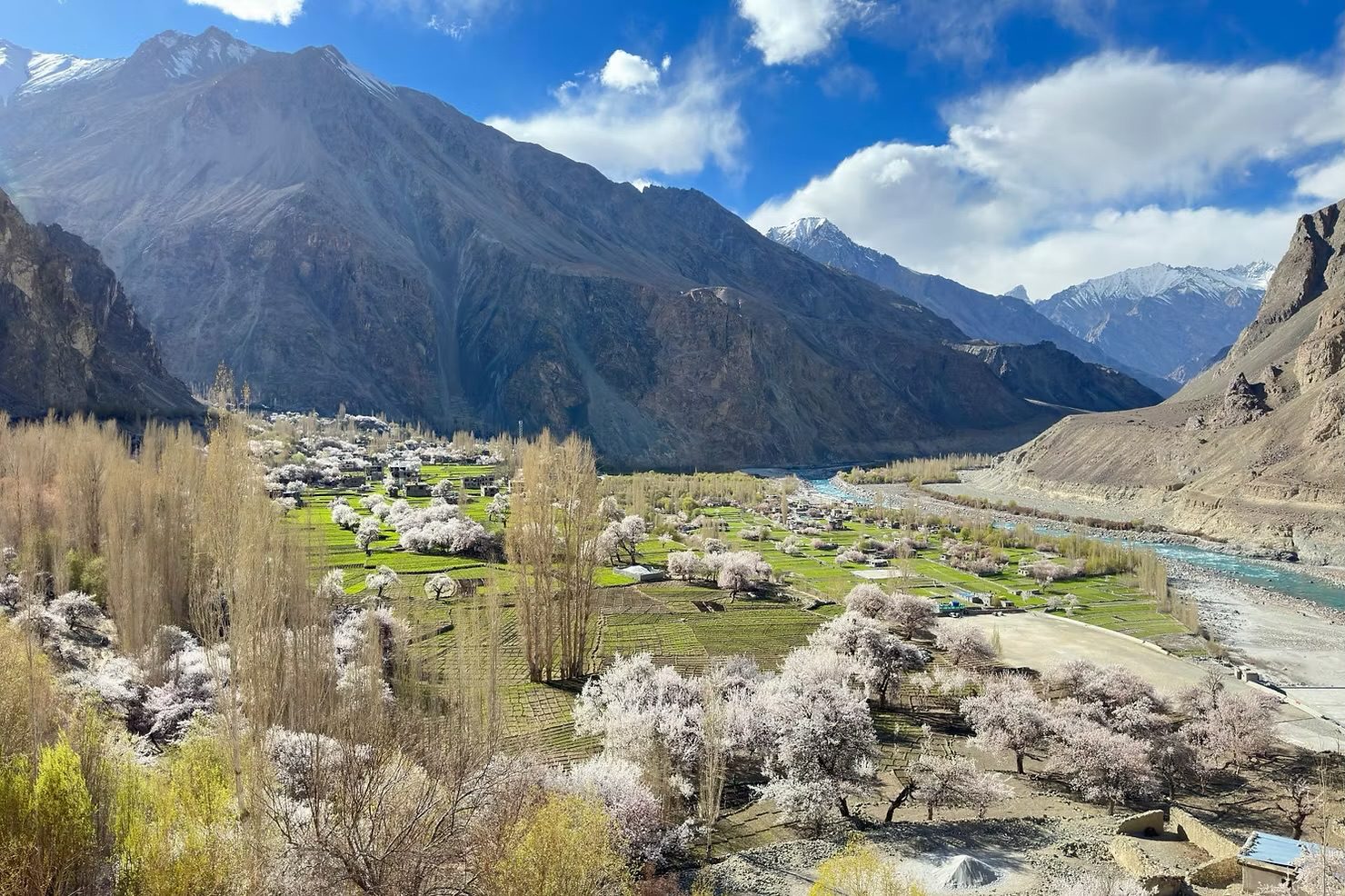
About the Author
Elena Marlowe is a travel essayist and poetic observer of landscapes where silence speaks.
Her writing blends emotional depth with cultural curiosity, offering readers soulful journeys into the heart of places like Ladakh, the Alps, and beyond.
When not chasing desert winds or mountain blooms, Elena can be found journaling beside rivers, sipping tea with strangers, and searching for the next quiet place that teaches her something new.
She believes that the best journeys are not measured in miles, but in moments that stay with you.


